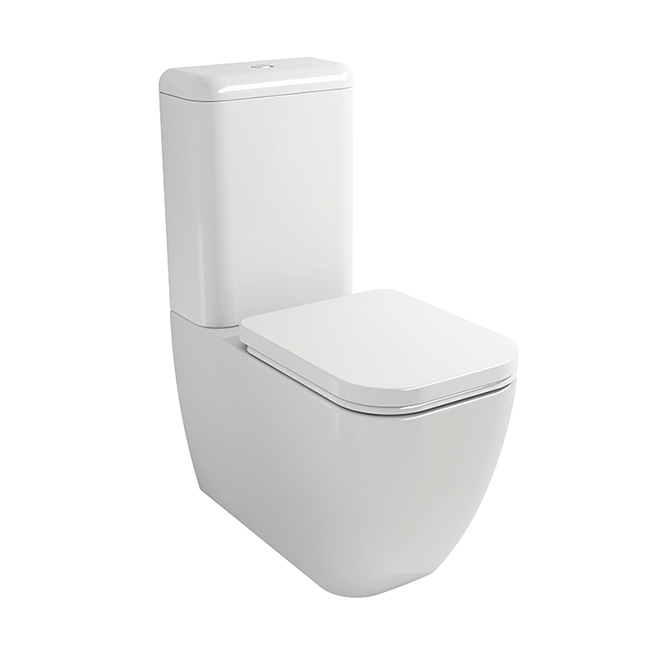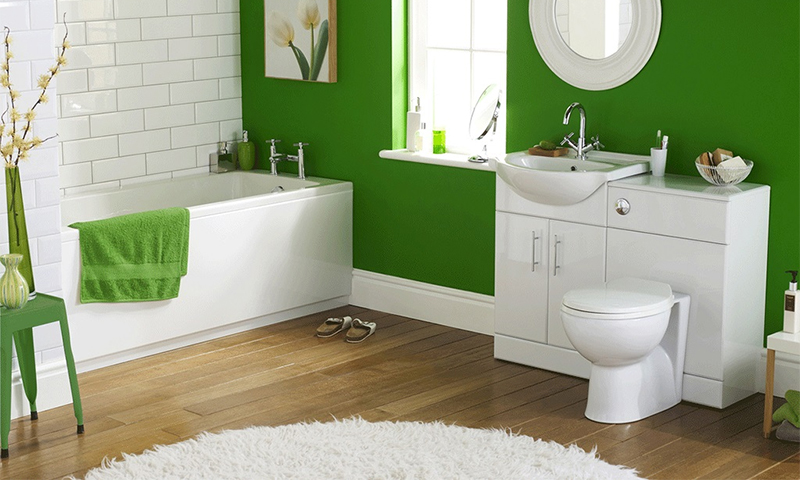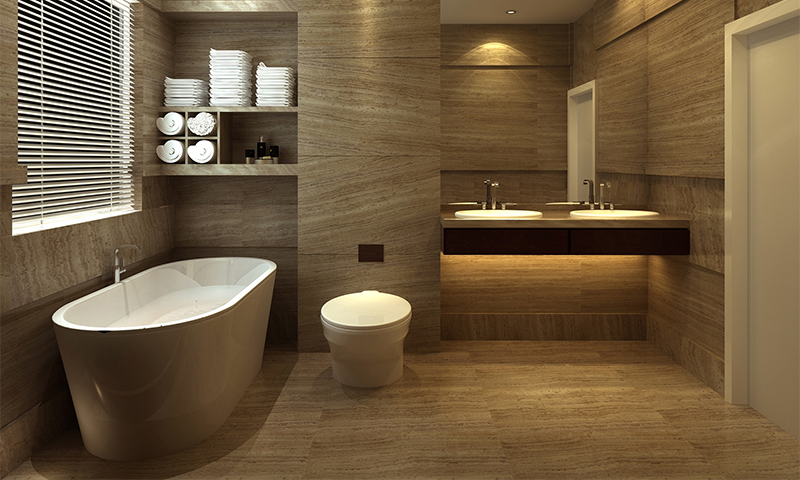The toilet is a sophisticated plumbing fixture, the purchase of which requires many parameters to be considered. Of course, you can do without them, while guessing with a choice. But why risk if you can read the article and go for the goods with the luggage of the necessary knowledge.

Content:
The best manufacturers of toilet bowls - which company to choose
The name of the manufacturer is always taken into account when making a purchase. If the company is well-known and reputable, the user always willingly chooses its product. Toilets are no different in this respect.
The best firms that produce high-quality plumbing fixtures are listed below.
- Roca;
- Gustavsberg;
- Cersanit;
- Jika;
- VitrA.
- More details: best toilet bowls manufacturers
After reading the leading manufacturers, read the article about 5 best toilet bowls and choose a specific model for yourself.
The principle of operation and the device toilet

A toilet bowl is a sanitary device that is installed in the toilets of various buildings for the civilized management of human physiological needs.
The toilet consists of two main nodes:
1. The device is connected to the internal sewage system;
2. Bachek - a tank with water that is fed into the bowl for flushing natural waste.
Toilets are:
1. With floor and suspended installation;
2. With oblique, horizontal and vertical releases;
3. With cup, funnel and visor bowls;
4. With straight and circular plums;
5. With combined, separate and built-in tanks;
6. From faience, porcelain, stainless steel, plastic and stones - artificial and natural.
The task of the device is to divert waste from the internal sewage system to the external - centralized or autonomous.
This procedure involves several steps:
1. After pressing the button on the tank, water up to 6 liters is discharged into the bowl to wash off the sewage;
2. The faeces through the water trap fall into a horizontal pipe with a slight slope, after which they drift by gravity to the riser;
3. From the lowest point of the latter, the movement continues; as a result, the polluted liquid is in the external network.
Types of toilet bowls
With disc cup

The structure of a dish-shaped bowl differs in two features:
1. The drain hole is in front;
2. In the central and rear section there is a shelf - it is slightly concave downwards, therefore it is always filled with water.
This design is quite contradictory, since improvements in some operational and hygienic indicators entail a deterioration of others.
For example, a liquid in a dimple almost eliminates sticking of excrement, while at the same time causing splashes during the emptying process. In addition, the water flow often occurs too rapidly, of course, you have to adjust the pressure, for which it is possible to reduce the filling volume of the tank.
Benefits:
- minimal adhesion of feces;
- optimal water flow - varies up or down depending on the specific model;
- relatively low cost.
Disadvantages:
- the occurrence of splashes during operation of the toilet;
- accumulation of dirt and the formation of rust stains;
- the need for frequent care.
Devices with a "plate" - not the most practical, but cheap, in addition, are available with different configuration bowls. Therefore, there is always the opportunity at an affordable price to choose the best option for modest requests.
For example, for an inexpensive dwelling, including a small country house.Such products are most in demand in warehouses, boiler rooms, workshops, construction change houses, public toilets.
With a shade bowl

Visor and dish-shaped bowls are in many ways similar. But, if the shelf is located in the second one behind the hole, then in the first one there is a sloping back wall. This feature of the design significantly affects the operation, namely: ease of use, flushing mode and the degree of complexity of care.
In this case, feces, falling on an oblique surface, slide into the drain, as a result there are no splashes, but a trace remains, which is not always washed off in one go. Then you have to use a brush, and sometimes an additional portion of water.
Since the devices with a visor bowl hide the smells well, air fresheners have to be used infrequently - at least, less often than in the previous version.
Benefits:
- elimination of splashes;
- mostly good flushing;
- no significant odor;
- comfort of use.
Disadvantages:
- adhesion of waste to the back wall pan;
- periodic need for additional flush.
Toilets with a visor bowl are installed on a variety of objects, including apartments and private houses. They are popular for various reasons, but the most significant of them is the absence of splashes during operation.
With funnel cup

In the funnel-shaped bowls, unlike the previous two, the opening for draining is located in the center. Thanks to this configuration, the waste falls directly into the well, and the minimum part that remains on the walls is easily washed off with a small amount of water.
A significant disadvantage of this form is splashing. Many manufacturers solve this problem with an “anti-splash” system.
At its device the following conditions are met:
1. The drain hole has a bezel and is slightly offset to the back wall;
2. The shelf in a hydrolock passes smoothly under an inclination;
3. The diameter of the hole - the minimum;
4. The water level and the location of the drain channel is low.
Benefits:
- fecal marks on the walls - minimal;
- good flushing, after which the brush is rarely used;
- high hygiene;
- profitability of water consumption;
- the actual absence of the spread of odors.
Disadvantages:
- possibility of splashes - the problem is solved by the anti-splash system;
- A considerable proportion of fairly expensive models.
Instruments with a funnel-shaped bowl are in high demand, especially since it is them that are mainly produced by eminent companies who equip structures with an anti-splash.
Depending on the models and financial possibilities, products are bought in private houses, apartments, cottages, as well as in hospitals, administrative buildings and educational institutions.
With a combined cistern

The most common to date tank - combined (compact), which is mounted on a specially provided rear shelf toilet.
As a rule, it comes bundled with the device and represents a single whole with it when assembled - if necessary, this container can be replaced with any other one that is suitable in size and design.
Mounted such a tank quickly, easily and cheaply - for fixing any stainless steel bolts with rubber gaskets are used. Due to its low location and open access, it is more than comfortable to repair this device.
In addition, it is easy to use, makes little noise, looks stylish, but creates a relatively low discharge pressure.
Benefits:
- compactness of the kit;
- ease of operation and repair;
- minimum noise level;
- simplicity and low cost of installation;
- modern stylish look.
Disadvantages:
- low pressure due to low “landing”;
- slight decrease in storage space: the toilet is a bit distant from the wall.
Devices with a combined tank have many advantages, therefore they are in high demand. And both in apartments and private houses, and in commercial, administrative and industrial buildings.
With built-in tank

Increasingly, a built-in tank is used, consisting generally of a plastic flat canister, a control panel and a pipe leading to the toilet bowl.
Such a device is mounted in a wall niche or behind a false-panel, and so that only 2 buttons are visible from the whole structure - when you press the larger one, it drops down to 6 liters of water, and when pressed down, up to 4 liters respectively. The above option is applicable for floor or attachment device.
When installing a suspended model, an additional installation is used - a steel frame to which both the cistern and the toilet bowl are attached. The specified device is not cheap, but after a relatively difficult installation is very easy to use.
Benefits:
- the possibility of economical consumption of water: available to lower from 2 to 6 liters;
- lack of noise: almost all design is "sewn up";
- maintainability - problems are eliminated after removing the control panel;
- release of useful space;
- hygiene and style.
Disadvantages:
- relatively high prices;
- difficult installation.
Recessed tanks are modern devices whose popularity is only growing every year. They are mainly installed in apartments and private houses, including with cottages and mansions.
With separate tank

The once popular single tank is the least in demand - it is attached to the wall at a low, medium or sub ceiling level, equipped with a float mechanism, connected to the toilet with a long vertical pipe, controlled by a push button or a handle on a rope.
This capacity is relevant under two conditions:
1. Embedded model is not appropriate for financial and (or) other reasons;
2. Combined modification is not suitable, because the toilet is small in area (in the case of a split device, the appliance is installed flush with the wall).
Benefits:
- significant head for efficient flushing;
- the possibility of saving the useful area;
- easy installation
Disadvantages:
- noisy at work;
- inconvenience in maintenance, especially with sub-ceiling fastening.
A separate tank is rarely purchased, except for the Turkish-style closet or to create a significant head. This product is also popular with the owners of dwellings, the bathroom of which is executed in retro style.
With floor installation

The traditional installation method is floor mounted. If you do not take into account the accompanying work, the installation itself is performed from 10 to 30 minutes.
1. A screed or tile is provided to ensure flatness of the floor - the inspection is carried out by the building level;
2. the device is tried on in the place of “landing”, then marks are put through the mounting holes;
3. according to the latest, holes are drilled into which the anchors are driven;
4. a toilet is installed, nuts are tightened, decorative caps are put on;
5. At the end of the docking circuit is sealed with sealant.
With this method, "fit" is possible both ordinary and angular - for the second case, the tank is selected with a 3-angle shape in plan.
Benefits:
- usability and durability;
- wide selection in many ways;
- easy installation and secure mounting.
Disadvantages:
- inconvenience when laying tiles, if the toilet is mounted first;
- minor maintenance problems around the floor.
Floor appliances are installed everywhere, and for a long time. And this is not surprising, since the leg version is practical and reliable; in addition, installation is relatively simple, fast and inexpensive.
With hanging installation

Suspended toilet is a modern sanitary device without a supporting leg.
It is attached to the installation - a sturdy steel frame, which, in turn, is fixed to the main wall and floor, after which it is sewn up, for example, with a plasterboard - subsequently painted or finished with decorative tiles.
For such a product, a built-in tank is provided - it is located in the frame plane, therefore, after finishing the works, only the control buttons are visible. When repair is necessary, these keys are removed, thus opening access to the inner “filling”.
Suspended models are very comfortable, elegant look, in addition, withstand users weighing up to 400 kg.
Benefits:
- convenience and comfort of operation;
- space saving;
- hygiene and easy maintenance: due to the lack of a leg, a floor under the bowl is available;
- a variety of models;
- modern ergonomic design.
Disadvantages:
- comparative installation complexity;
- high price.
Suspended installation type can be used in any building. The question in this case is the ratio of feasibility and price. If in a private house and apartment this option would be appropriate, then in a rarely visited country house - no.
Toilet Selection Parameters

Type of issue
Devices are created with 3 types of release:
1. Oblique
2. Vertical,
3. Horizontal.
The choice is made depending on the location of the tee socket. The bead, being a part of a sewer pipe, can be rotated ≈ 30 ° relative to its axis, raised by about 10 cm, distant from the wall by about 50 cm.
Installation method
Depending on the installation method, the models are divided into the following types:
1. Outdoor;
2. Suspended.
3. Attachment - mounted flush with both the floor and the wall.
Drain
Drainage can be done in several ways.
Its most common variations are:
1. Direct - the water flows quite intensively, but covers only the linear portion of the bowl;
2. Circular - a volumetric circuit is formed, but the flow rate is insignificant, in addition, models with numerous contour holes are more expensive.
Configuration
Bowls in their configuration differ:
1. Visor - the most preferred, since during their operation there are no splashes;
2. Funnels - no less demanded if equipped with an anti-splash system;
3. Dish-shaped, non-competitive.
Installation method
According to the method of installation tanks are:
1. Combined is a classic;
2. Separate is retro
3. Embedded is a modern solution for operation and design.
Cover and seat
For ease of use, seats are required, as well as covers that are made of expensive duroplast and cheap plastic, are treated with antibacterial compounds, equipped with a practical microlift. Sometimes a "heaped" lid may cost more than the toilet itself.
Material and color
For the manufacture of devices using a variety of materials:
1. Porcelain,
2. Faience,
3. Plastic,
4. Stainless steel,
5. Artificial and natural stones.
Color can be very different:
1. White,
2. Turquoise,
3. Beige,
4. The black.
Which toilet to choose

1. With a limited budget, a faience toilet bowl with a pan-dish, side water supply and a plastic lid is suitable;
2. If you need a simple but good-quality device, a porcelain floor model with a visor sink and a combined tank with a lower liquid supply line is suitable;
3. When the emphasis is on hygiene and economical consumption, the best option is the version with a funnel-shaped bowl, a circular drain and the possibility of lowering to choose a larger or smaller volume;
4. If it is necessary to ensure a significant pressure, a toilet with a separate tank is purchased;
5. If the plans have a modern device that meets the higher requirements, there will be a hanging toilet with an installation, a built-in canister and control buttons brought out to the outside.
6. When you need maximum comfort, you can buy a granite model with an auto-fill and lighting, as well as a heated seat.
How much is the toilet

1. Floor standing - Roca Debba 342997000: 0.655 / 0.355 / 0.4 m, sanfarfor, horizontal outlet, double flush, circular drain, microlift. 3.1 ... 9.4 thousand rubles.
2. Floor - Jika Vega 824514000242: 0.68 / 0.36 / 0.78 m, sanfarfor, oblique release, double flush, direct drain, combined tank. 3.1 ... 6.8 thousand rubles.
3. Floor (toilet bidet) - VitrA Grand 9763B003-1206: 0,655 / 0,355 / 0,830 m, sanfarfor, horizontal release, double flush, straight drain, "anti-splash". 4.8 ... 7.9 thousand rubles.
4. Suspended - Cersanit Delfi S-SET-DELFI / Leon / Cg-w: 0.602 / 0.36 / 0.375 m, sanitary ware, installation, hidden tank, double flush, microlift, anti-mud coating. 6.2 ... 10.6 thousand rubles.
5. Suspended - Gustavsberg Hygienic Flush WWC 5G84HR01: 0.53 / 0.37 / 0.41 m, sanfarfor, horizontal release, lifter, hidden installation 11.0 ... 40.2 thousand rubles.
It will be interesting to friends too










